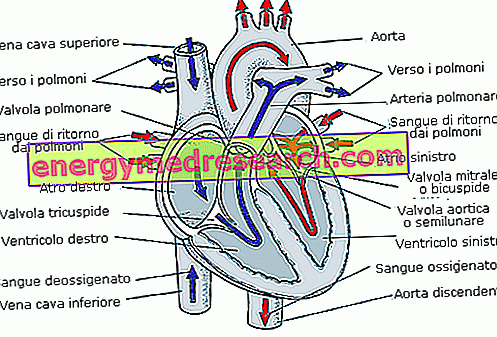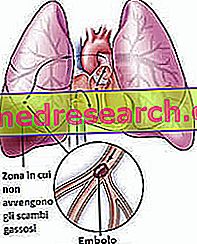Curated by Zonca Riccardo
Intense training forces the whole body to "adapt" to this new condition of "super-work" through the development of morphological and functional modifications, which are called adaptations . As far as the cardiovascular system is concerned, the most striking adaptations are observed in athletes dedicated to aerobic or endurance sports, which require reaching and maintaining long-term cardiac output (the amount of blood that the heart pumps in circulation in unit of time) maximum. These adaptations make these athletes' hearts appear so different from those of a sedentary who was coined with the term "athlete's heart".

The presence of these adaptations allows the athlete's heart to provide superior performance during normal exercise.
Their size varies according to:
type, intensity and duration of competitions and training sessions;
basic physiological characteristics of the subject, largely genetically defined;
age of the subject and time of the beginning of the activity;
We can distinguish the Adaptations in:
CENTRAL ADAPTATIONS | PERIPHERAL ADAPTATIONS |
Borne by the heart | Dependent on blood, arterial, venous and capillary vessels |
Central adaptations
All the adaptations of the athlete's heart are aimed at receiving and pumping out from the ventricles a quantity of blood that is clearly higher than that of an untrained person; the heart is thus able to considerably increase the cardiac output under stress, satisfying the greater O2 demands of the muscles. The main modifications are:
- increased heart volume (cardiomegaly);
- heart rate reduction (bradycardia) at rest and under stress.
The enlargement of the volume of the heart is the most important phenomenon for the purpose of increasing the Systolic range (quantity of blood expelled at each systole) and of the Cardiac Output. In athletes who practice aerobic sports at the highest level the total cardiac volume can also be doubled. Looking at the heart of these athletes one can ask when it should be considered "pathological", due to heart disease.
To define these limits we must take into consideration the body size of the subject (body surface). For example, in the animal world, the size of the heart depends strictly on its size and the type of physical activity it performs; which naturally conditions muscular energy demands. In fact, the largest heart of all is the whale, whereas the largest in relation to body weight is that of the horse.
In relation to what has just been said, in general, the biggest hearts are also those that beat more slowly and vice versa; for example, the heart of a small rodent called mustiolo exceeds 1000 bpm ! (to know more).
With the advent of ultrasound it was possible to discover the existence of different models of adaptation of the heart in athletes who practice different sports. Regarding the left ventricle, two adaptation models have been identified:
ECCENTRIC HYPERTROPHY concerns aerobic endurance athletes, in which the left ventricle increases its internal volume and the thickness of its walls, taking on a rounded shape;
CONCENTRIC HYPERTROPHY concerns athletes dedicated to static sports, power, in which the left ventricle increases the thickness of the walls without increasing the internal volume, maintaining its original shape, ovoid, or assuming a more elongated shape.
Ultrasound today has great power in the hands of the cardiologist because it allows him to distinguish a physiological cardiomegaly, due to training, from the pathological one, due to diseases of the heart related to alterations of the normal functioning of the heart valves (valvulopathies) or to a heart muscle dysfunction (myocardiopathies).
Aerobic or resistance training causes important changes in the heart's autonomic nervous system, characterized by a reduction in sympathetic (adrenergic, adrenaline) tone with prevalence of vagal tone (from the vagus nerve where the fibers that reach the heart run) this phenomenon is so called "relative vagal hypertonus". The most obvious consequence of this new regulation of the autonomic heart system is the reduction of the resting heart rate. In a sedentary subject, even after a few weeks of training, it is possible to observe a reduction in CF by 8 - 10 bpm.
At great levels of competition it is possible to reach 35 - 40 bpm, values that configure the athlete's classic bradycardia. At this point we can ask ourselves the question: "to what extent can an athlete's heart beat slowly?" the answer is now simple thanks to the holter electrocardiogram (ECG), capable of recording on magnetic tape for periods of 24 - 48 hours; this is essential to understand if such low FC values are normal.
THE HEART OF ATHLETE DURING EFFORT
At rest the Cardiac Output of a trained athlete is similar to that of a sedentary subject of the same age and body surface, about 5 L / min in an adult person of average build.
The difference between the athlete's heart and that of the sedentary becomes clear during the effort. In highly trained endurance athletes, the maximum GC can exceptionally reach 35 - 40 L / min, values practically double of those reached by a sedentary subject.

The trained heart increases the GS with respect to the rest values to a greater extent than that of the heart of a sedentary subject; in fact, with the same exercise intensity, the athlete's CF is always much lower than the sedentary one (relative bradycardia during exertion).
In addition to these differences described above, there are other differences in the behavior of the heart during the effort. By hand they love that the CF increases during the physical exercise, the time available to the ventricles to fill up (the duration of the diastole) is reduced in parallel: the trained heart, being more "elastic", is easier to accept the blood in its ventricular cavities and consequently manages to fill up well even when the CF increases a lot and the duration of diastole is reduced. This mechanism contributes to the maintenance of a high GS.
Peripheral adaptations
It is logical that the circulatory system, consisting of arterial and venous vessels, must also adapt to this new reality. In other words the circulation must be increased in order to allow the flow of blood flows (equivalent to car traffic) so high without "slowing down".
At the expense of microcirculation, the most important adaptations naturally concern the muscles, particularly the more trained muscles. The capillaries, through which the exchanges between blood and muscle take place, are distributed to a greater extent around the red, slow, aerobic metabolism fibers (oxidative fibers), which need a greater quantity of oxygen.
In the endurance athlete with training, there is an absolute increase in the number of capillaries and the capillary / muscle fiber ratio, a phenomenon known as capillarization . Thanks to it, the muscle cells find themselves in the best conditions to take full advantage of the increased availability of oxygen and energy substrates. The increase in the capillary surface and the capacity of vasodilation of the muscular arterioles, causes the muscles to be able to receive truly remarkable amounts of blood without increasing the mean arterial pressure.
In addition to vessels of microcirculation, medium and large-sized arterial and venous vessels also increase their size ("athlete's vessels"). The phenomenon is particularly evident in the inferior vena cava, the vessel that brings back to the heart the blood coming from the muscles of the lower limbs, used a lot in various sports.
Following resistance training, coronary arteries increase, which feed the heart. The athlete's heart, by increasing its volume and muscle mass, needs a greater supply of blood and a greater quantity of oxygen.
The increase in the size of the coronaries (the vessels that nourish the heart) is another of the elements that differentiate the physiological hypertrophy of the heart from the pathological one linked to congenital or acquired heart diseases.



